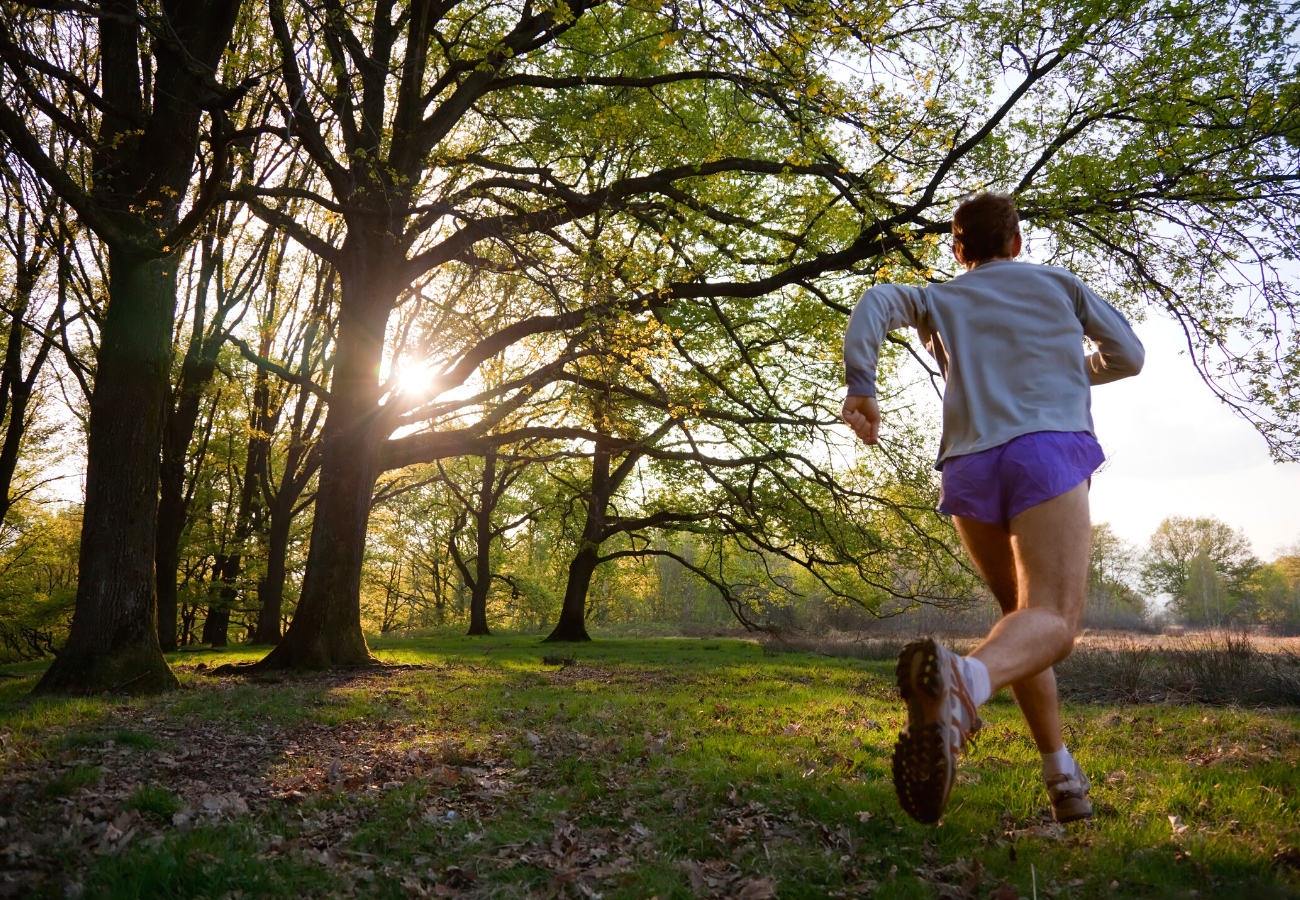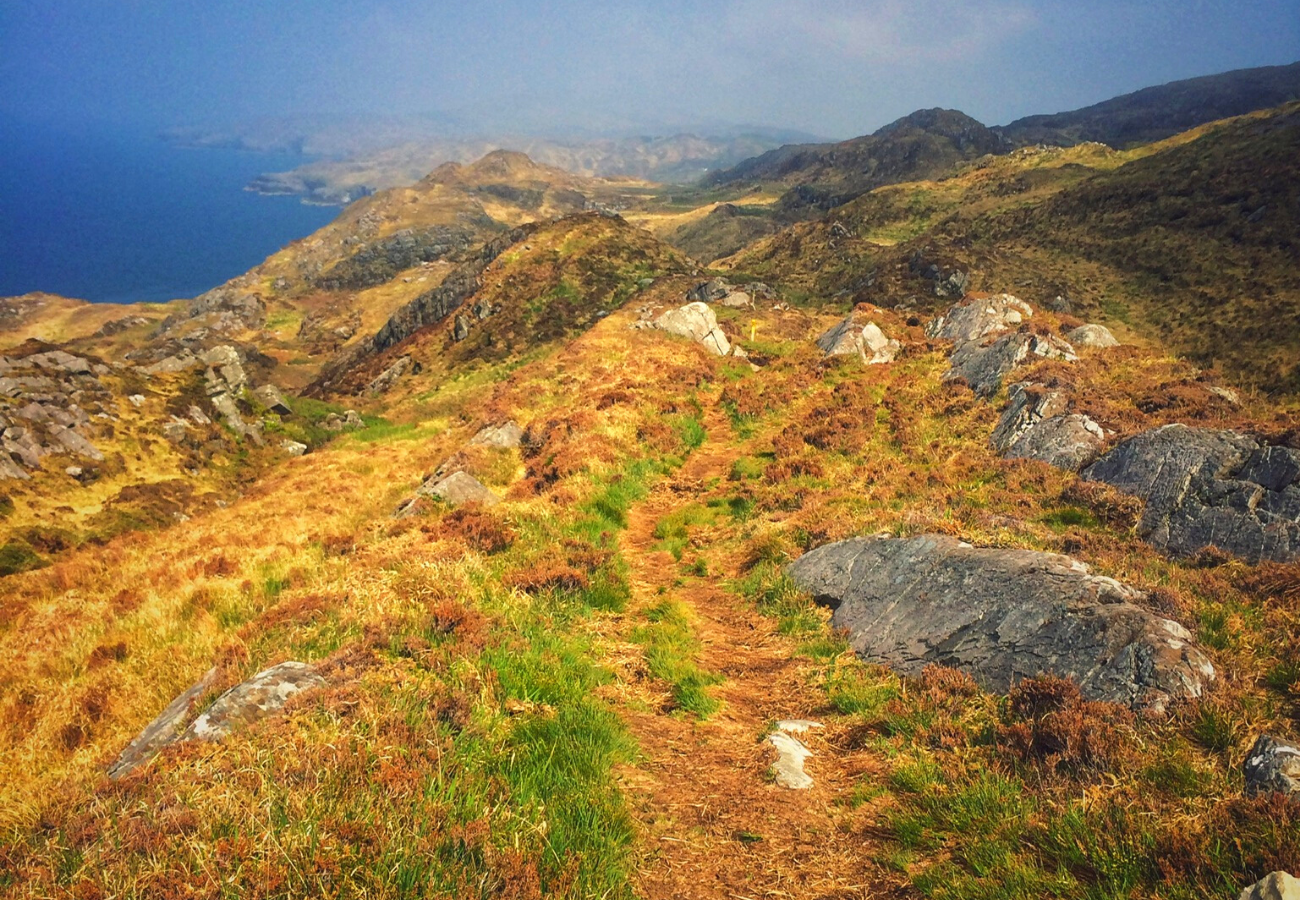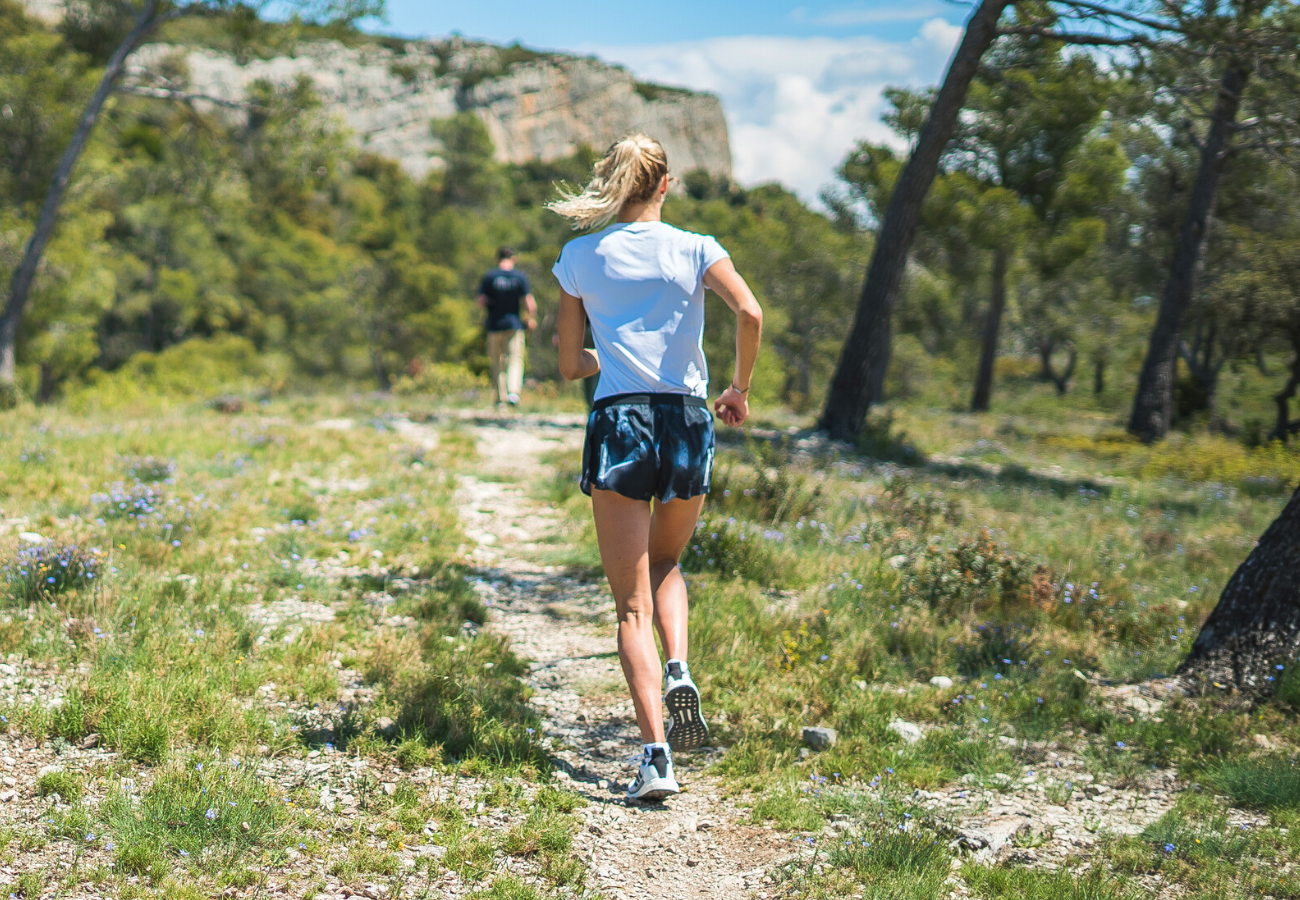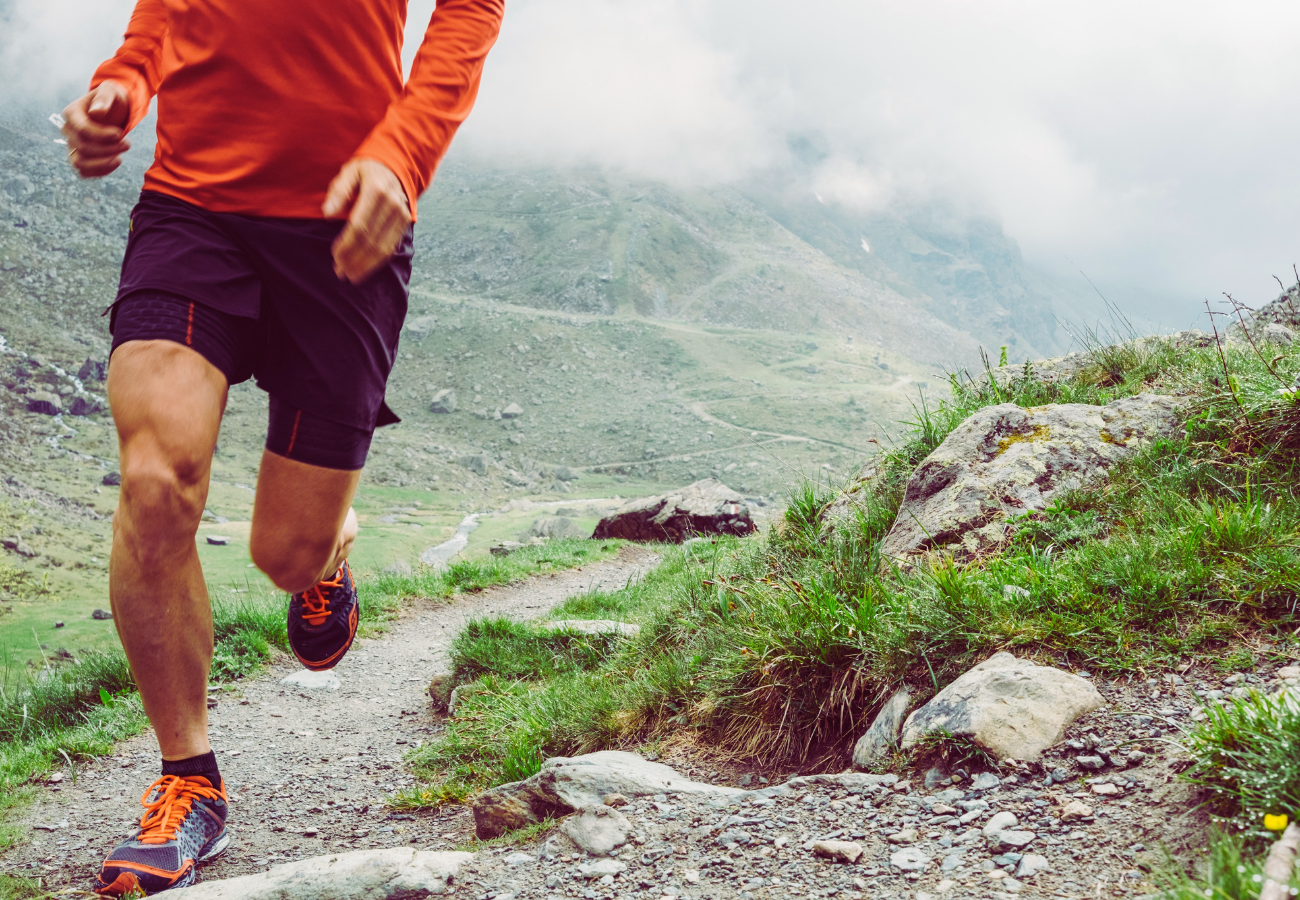- Home
- Connect w/ Nature
- Trail Running
5 Reasons to Consider Trail Running
Trail Running is one of the fastest growing outdoor sports worldwide, and for great reason. It is essentially a combination of two popular outdoor activities – running and hiking, and it partakes in the benefits of both.
Unlike traditional running, trail running takes place mostly or entirely on unpaved paths. Similar in many respects to cross-country running, trail running can include a variety of landscapes, from woodland and meadow trails to mountain and hill paths. Cross-country running tends to be a more formalized sport, with rules and official distances, whereas trail running can be as formal or informal as desired.
For the competitive individual, there are growing numbers of competitive events, races, and gatherings.
For the outdoor enthusiast or occasional runner, trail running provides the opportunity for endless new routes, vistas, and challenges.
It’s important to remember: trail running doesn’t have to be difficult or frightening. It can be as casual and stress-free as you desire to make it. Like all exercises and activities, it responds to the interests and goals of the individual.
It also doesn’t have to be an either/or choice. A person can be both a trail runner and a traditional runner. Or a trail runner and hiker. Consider mixing and matching to find what speaks to you, and allow trail running to break up your routine.
Here are five great reasons to consider trail running:
Get Connected to Nature
Trail running offers the same physical and mental benefits of running – increased cardiovascular health, lung capacity, leg strength, mental toughness – but with many included secondary benefits.
Being in nature – particularly in “green spaces” such as forests and meadows – has been shown to provide many physical and psychological health benefits, such as:
- Decreased risk of some cancers
- Lower Stress
- Decreased blood pressure
- More robust immune system
- A deeper connection to the living environment
Combining the physical and mental benefits of running with those of increased and regular time spent in nature can yield a sense of happiness, contentment, and connectedness with the larger world.
Trail running can take us back toward a simpler way of living. The trail runner takes “the road (or trail) less traveled”. Running in nature takes us away from the worries of everyday – the worries of the human world, with its paved roads and anxieties – and puts us in the natural world, where our thoughts can roam freely and release accumulated stresses.
Trail Running is Better for Your Joints
Any runner will tell you that running can be hard on the joints. There are few runners that don’t have stories of stress fractures, tendinitis, or torn cartilage. The constant pounding of our feet along paved surfaces and roads can be transferred throughout the body – up through the bones, the joints, even into the spine.
While all forms of running can be stressful on the body, the unpaved nature of trail running tends to be less impactful and damaging to many areas. Dirt, leaves, and grass soften the shock of each footfall.
Taken one step further (no pun intended) trail running often occurs on uneven or irregular surfaces. This requires increased attention on the part of the runner, but also builds balance and strength in the joints by utilizing a variety of muscles that aren’t utilized on flat and even surfaces.
This lack of regularity means that the body is always adjusting, changing angles, rebalancing. This makes trail running less repetitive than road or surface running. Most running injuries are repetitive motion injuries – injuries sustained from constant overuse or repetitive impact. Trail running limits this constant repetition and thus the likelihood of repetitive motion injuries.
Challenge Yourself
Runners and other active outdoorsfolk are people who enjoy a challenge. Runners find joy in pushing themselves longer distances, in improving their times, and in the mental and physical hurdles they need to overcome to improve. Much like hikers and mountaineers are looking for new paths, steeper challenges, tests of endurance.
Trail running provides both runners and hikers with a new type of challenge, one that combines the endurance demands of running with the balance and strength requirements of hiking.
Running is something often done both as a personal hobby and as a competitive sport (marathons, 5K races, etc..). Whereas hiking is frequently a hobby or pastime where the primary competition is against oneself.
Trail running provides aspects of both, and a new challenge to people from both backgrounds. Those looking for competition will find an ever-growing selection of races and events focused on off-road running or combining trail running with other sports like swimming or obstacle courses. Often these are smaller, more personal events when compared to a 10,000-runner marathon.
Those looking for something entirely different – a change of routine, new sights, a different and more personal feeling, or the opportunity to develop and strengthen new muscles – will find that trail running offers endless prospects for variation and change.
Experience Variety
Runners tend to frequent the same paths and roads, day in and day out. They find comfortable urban paths through safe neighborhoods, avoiding traffic and crowds when possible. Depending on your place of residence there may be backroads or running tracks, but the trend remains the same. While the surrounding scenery may change, one track is very much like another.
Trail runners have a tremendous variety of different trails and scenery to choose from. Even in an urban setting, it is rarely far to the nearest nature preserve, state park, wetlands area, or wildlife sanctuary.
Every trail is different and offers unique viewpoints and challenges. A trail may be uneven and rocky, or wet and leafy, or steep and hilly. A trail may be all these things at different points. It requires some additional attention to detail, a subtle (and soon very natural) focus on the next two or three steps.
That additional focus also allows the runner to become more mindful, to become present in the moment. It allows them to notice small details, to become present in nature rather than simply present in their own mind.
Endless travel options open themselves up to trail runners. Running in different landscapes, elevations, and weather conditions can provide the type of challenge and variety that keep an individual engaged and devoted. It rarely has a chance to grow stale but offers new vistas to explore.
Off-road trails will take you to places you will never see from the roadside.
It's A "Green" Activity
Many people are finding that the earth, and humankind’s impact on the environment, has become more central to the way they think and see their place on this planet. It is no secret that our march toward “progress” has disrupted the natural cycles and wild places of the earth.
People are looking for more “natural” activities. Ways which we can connect ourselves to our wilder roots, to find the road less taken, to breathe in the air and sounds of nature. Trail running by itself won’t help fix any of the problems humans have created. But it can be the first step in a simpler and more nature-centric way of life.
Exchanging cities and roads and technology for simpler pleasures – the wind in the trees, feet in the grass, rain on your skin – is one large step toward more appreciation for the natural environment and becoming self-aware and conscious of your personal impact and the impact of your friends and family. Love of the natural world leads to action.
Go Prepared
Whatever your motivations, trail running can present a new and unique way to experience the natural world.
Trail running has some different hazards and considerations from traditional running. Like hiking or any outdoor activity, it pays to be prepared.
For starters, trail running shoes are different from standard running shoes. Due to the unpaved and often rough trails, trail running shoes have thicker and stiffer soles with deeper, more aggressive treads. These assist in the stability of the runner over uneven ground as well as improving traction and grip.
Depending on the area and the paths used, trail running can also require different clothing. Weeds, bugs, weather, altitude, and other factors should be considered when choosing attire. Narrow, off-road trails are often exposed to hazards such as poison ivy, mosquitoes, ticks, and other obstacles (fallen trees, for example).
Ensure someone knows where you’ve gone and you have a means of communication and navigation. If you are injured or lost on a little-trafficked trail, someone will need to know where to look.
Always have access to sufficient water, a first-aid kit, and an emergency snack. A slim hydration pack or trail running pack is a great option for seamlessly carrying the few essentials you might need.
Think minimalist!
Otherwise, all you need is the desire, the time, and a sense of adventure. Get out there and explore nature on foot.






